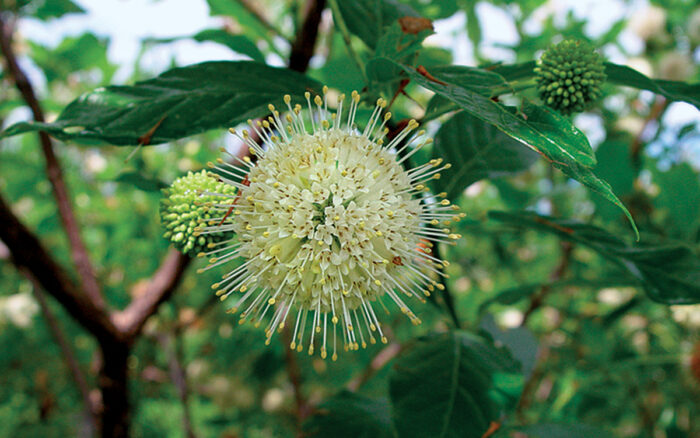
Lots of gardeners deal with at least one area of their property that never seems to dry out. As horticulturist Joseph Henderson explains in his article Plants for Soggy Spots, lots of plants flounder in these kinds of conditions: “Without a steady supply of air, waterlogged roots begin to gasp and eventually rot, killing the foliage above.”
Thankfully, a soggy spot doesn’t require a complete garden overhaul; it just requires the right plants that thrive in consistently wet conditions. Below, you’ll find plants for wet areas in the Midwest. To find even more plants for wet soil, check out Joseph’s article: Plants for Soggy Spots.
1. Astilboides
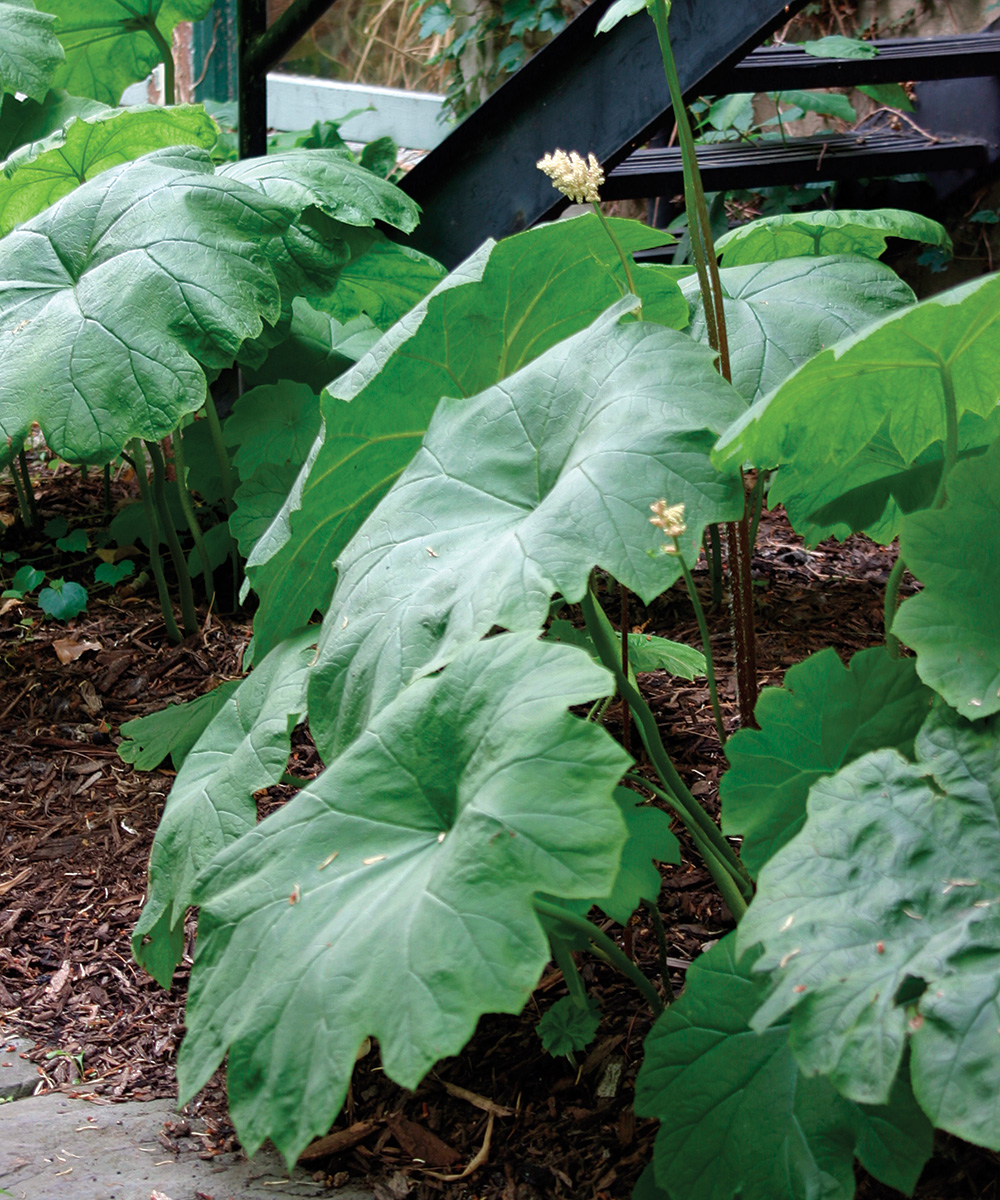
Name: Astilboides tabularis
USDA Hardiness Zones: 5 to 7
Size: 3 to 4 feet tall and 2 to 4 feet wide
Conditions: Partial to full shade; moist, average to rich organic soil
This is a midwesterner’s dream for beautiful, bold foliage. Frothy flower plumes in early summer reveal its close kinship with rodgersia (Rodgersia spp. and cvs., Zones 3–8). But astilboides is most loved for its leaves: perfect circles with delicate lobes held upright as the most exquisite umbrellas. It’s spectacular in moist low spots or when massed along streams or next to ponds.
2. ‘Hot Lips’ Turtlehead

Name: Chelone lyonii ‘Hot Lips’
Zones: 4 to 7
Size: 2 to 3 feet tall and 18 to 30 inches wide
Conditions: Full sun to partial shade; medium to wet humus-enriched soil
‘Hot Lips’ is a bright-colored cultivar of a perennial that is native to the Appalachians, and it will enliven almost any garden. Bronze tinged in spring, its later lustrous, deep green foliage remains attractive all season. Blooms resembling the heads of turtles appear late in summer and last for up to two months, providing spiky contrast to the rounded daisies of asters and other late-season plants. It’s showy enough to be used in large drifts in a perennial border, and it is also appropriate in rain gardens, bioswales, or naturalized areas.
3. Giant Japanese Butterbur
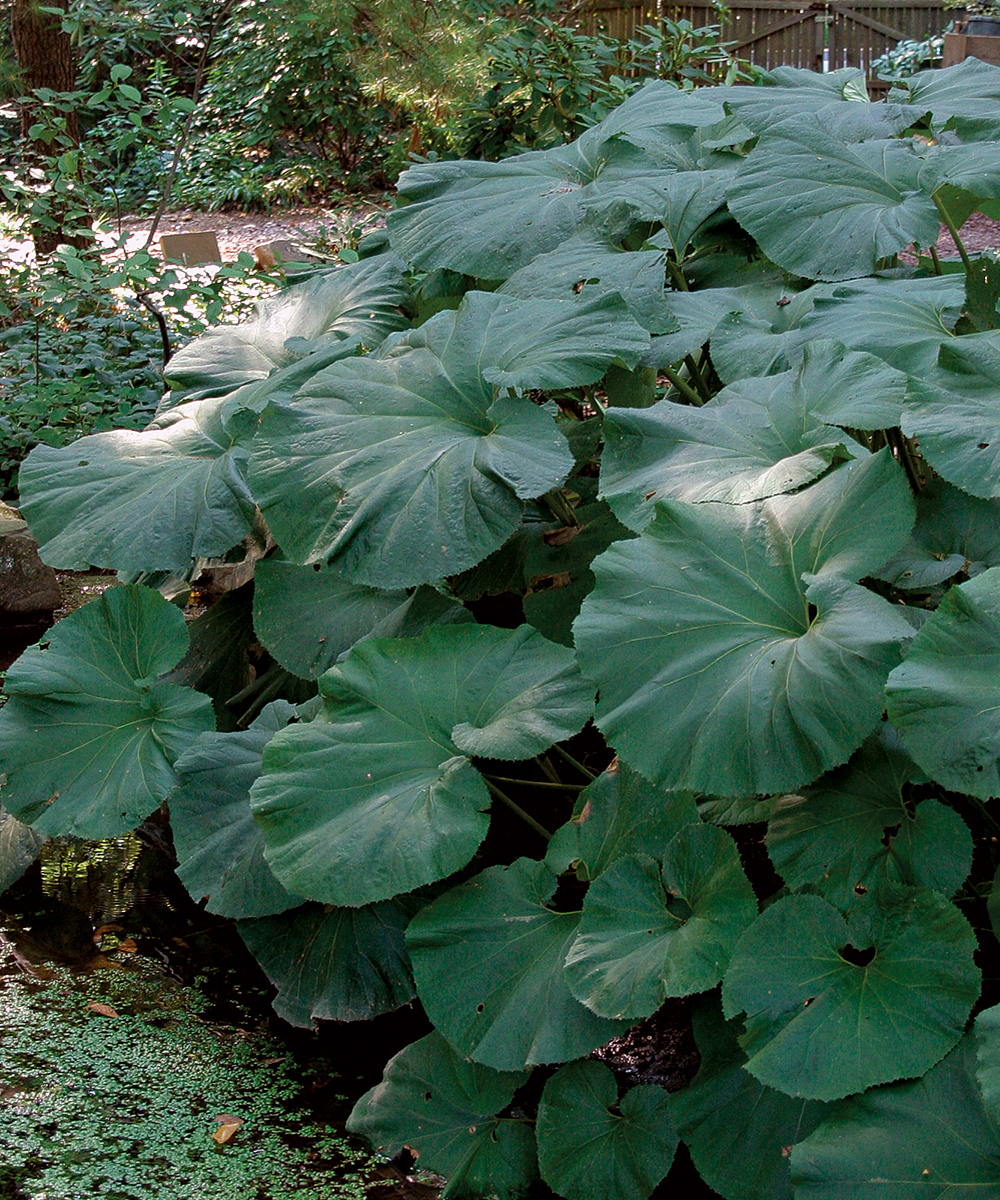
Name: Petasites japonicus ssp. giganteus
Zones: 5 to 9
Size: 3 to 4 feet tall and wide
Conditions: Partial to full shade; moist to wet soil
This perennial makes an impressive statement. The huge, rounded leaves can be up to 3 feet across, and are possibly more tropical looking than most plants in a tropical jungle. Its eye-catching yet peculiar blooms are in the form of dense sprays of creamy white, which emerge in spring before the leaves. Japanese butterbur is a thug and will spread aggressively by rhizomes. Use it in large planter boxes, in isolated boggy areas, or at the edge of liner ponds, where surrounding dry soil can keep it in check.
4. Buttonbush
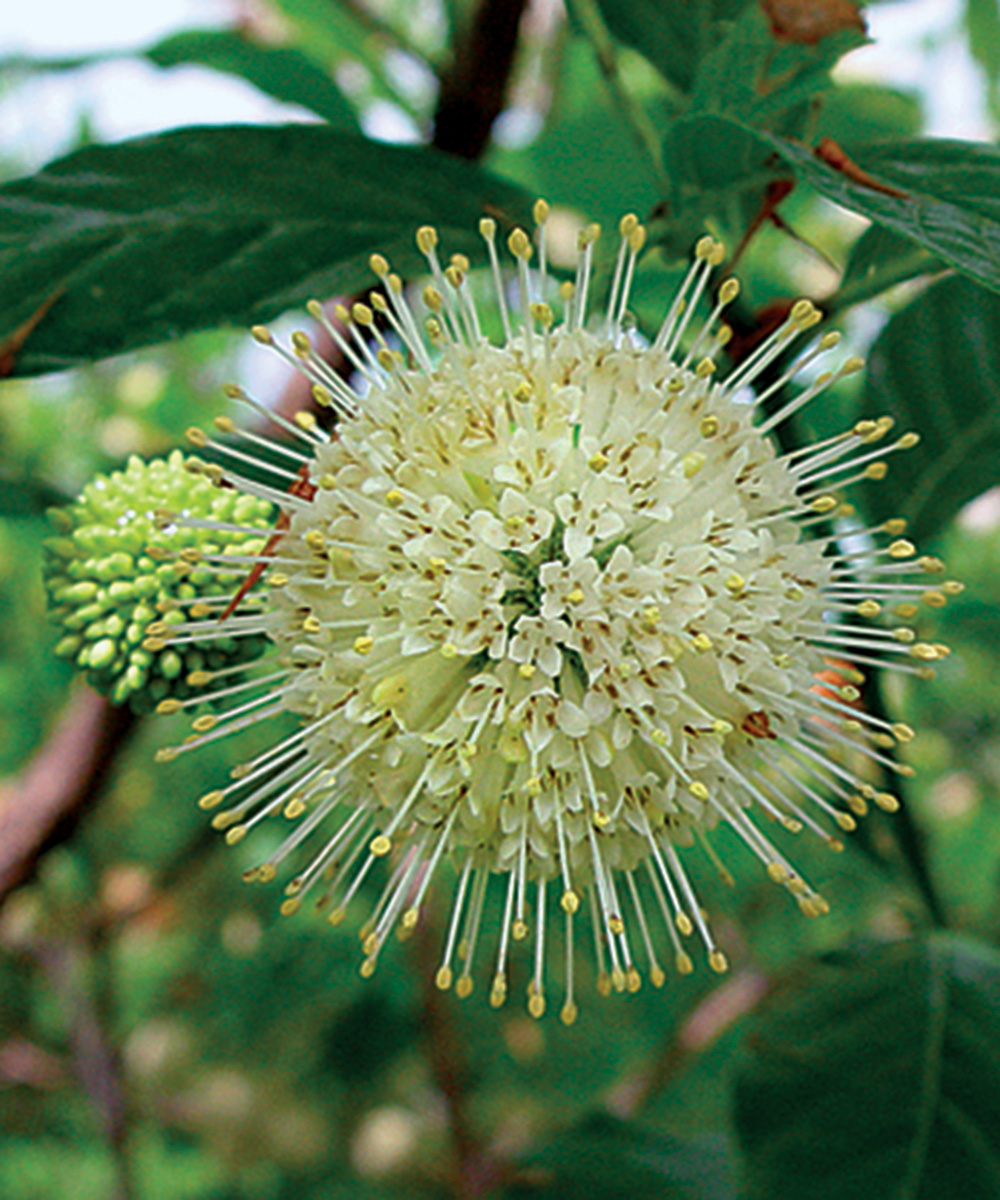
Name: Cephalanthus occidentalis
Zones: 5 to 10
Size: 3 to 8 feet tall and wide
Conditions: Full sun to partial shade; moist to wet soil
The bizarre summer blooms of buttonbush make me think of outer space, not of our native wetlands, where this shrub provides food and habitat for wildlife. After the fragrant blooms fade, the spheres remain attractive late into the year. This shrub’s casual style works best in the back of a shrub border, in a naturalized wet woodland, or near a pond.
Sabrena Schweyer is a landscape designer in Akron, Ohio.
Fine Gardening Recommended Products
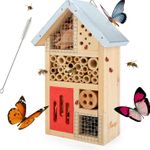
Niteangel Natural Wooden Insect Hotel, Garden Insect House for Ladybugs, lacewings, Butterfly, Bee, Bug
Fine Gardening receives a commission for items purchased through links on this site, including Amazon Associates and other affiliate advertising programs.

ARS Telescoping Long Reach Pruner
Fine Gardening receives a commission for items purchased through links on this site, including Amazon Associates and other affiliate advertising programs.

DeWalt Variable-Speed Cordless Reciprocating Saw with 6-Piece Saw Blade Set
Fine Gardening receives a commission for items purchased through links on this site, including Amazon Associates and other affiliate advertising programs.
- 18.31 x 6.13 x 4 inches
- 1-1/8-inch stroke length
- Variable speed trigger with 0-3000 spm
- DW4856 Metal/Woodcutting Reciprocating Saw Blade Set, 6-Piece


















Comments
Log in or create an account to post a comment.
Sign up Log in